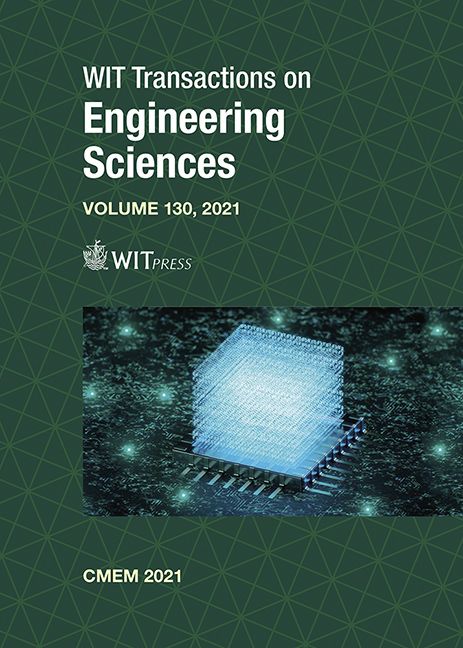PARTICLE-BASED FLOW VORTICITY ANALYSIS BY USE OF SECOND-GENERATION WAVELETS
Price
Free (open access)
Transaction
Volume
130
Pages
10
Page Range
51 - 60
Published
2021
Paper DOI
10.2495/CMEM210051
Copyright
Author(s)
ODDNY H. BRUN, JOSEPH T. KIDER, R. PAUL WIEGAND
Abstract
Modeling, simulating, and analyzing turbulent flow is a topic of high interest from both a verification and accuracy aspect. This work presents computational methods and experimental measures of turbulent fluid flow modeled with particle-based smoothed particle hydrodynamics (SPH), as well as the use of second-generation wavelets to analyze the nature of vorticity. Modeling and analyzing vorticity by use of first-generation wavelets for regular grid methods are well presented in literature. We are unaware of any work on this topic for particle-based methods. The difference between regular grid-based and particle-based approaches are due to irregularities introduced by the latter. We found that second-generation wavelets proved to be robust, fast, and reliable. Second-generation wavelets are designed to handle irregular grids and do not rely on a dyadic number of observations, which make them suitable candidates for SPH analysis as opposed to first generation wavelets. The resulting significant discrete wavelet transform (DWT) coefficients are found to be representative of the flow sections that may benefit from additional attention in the simulation model. The robustness of the method allows for fast initial screening of the flow to highlight sections that are of interest for more detailed analysis. Here, robustness refers to the two parameters significance level and grid resolution. Our results are demonstrated using a 2D sloshing tank case.
Keywords
smoothed particle hydrodynamics (SPH), vorticity, second-generation wavelets, thresholding





